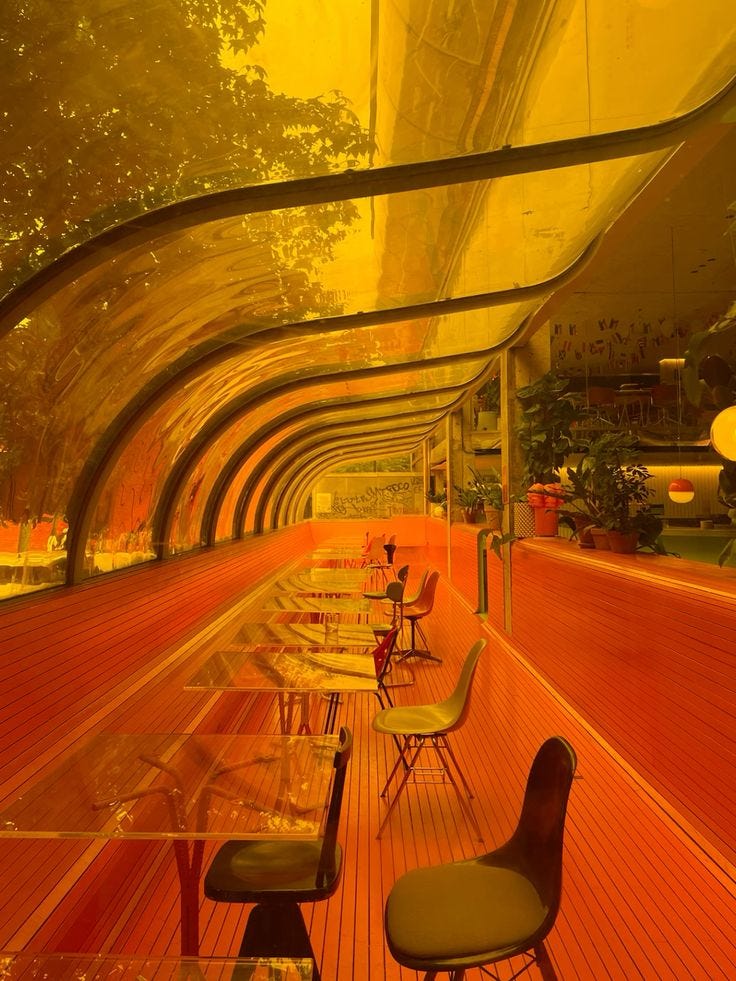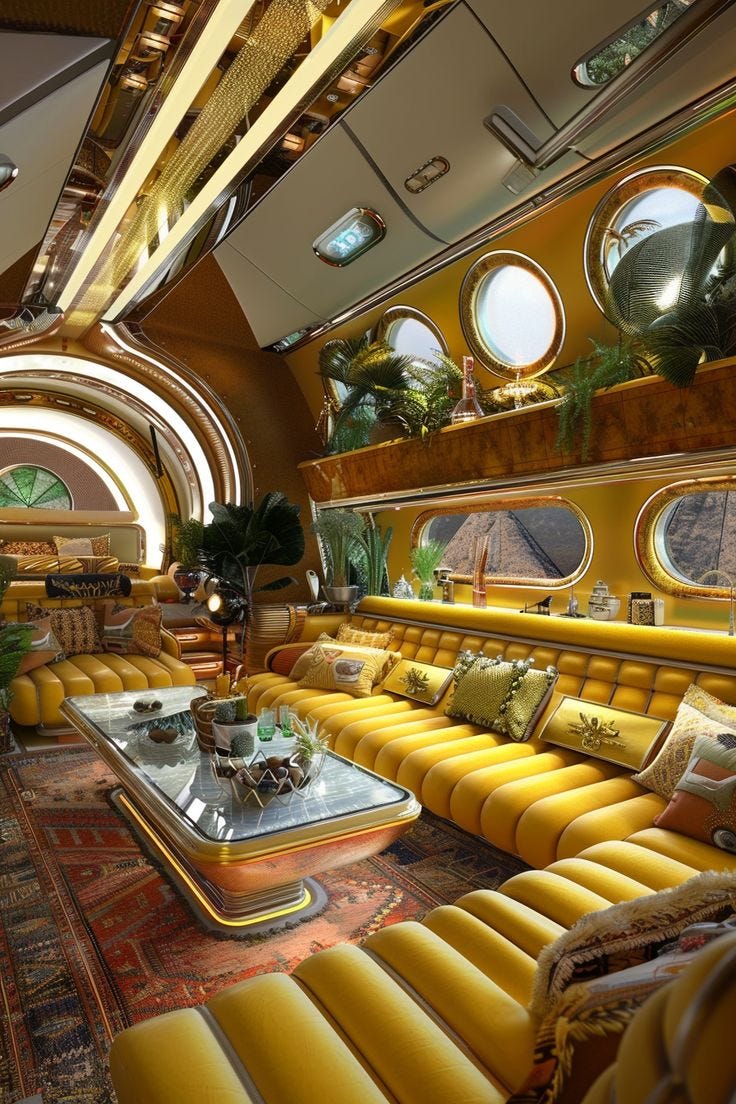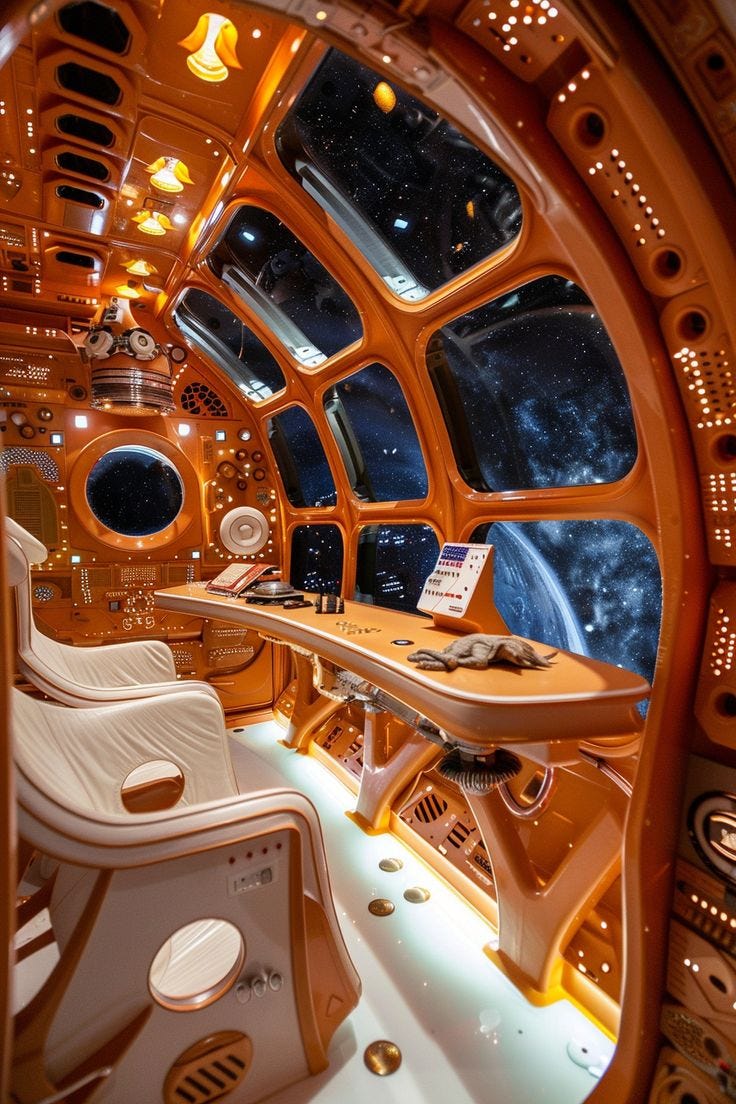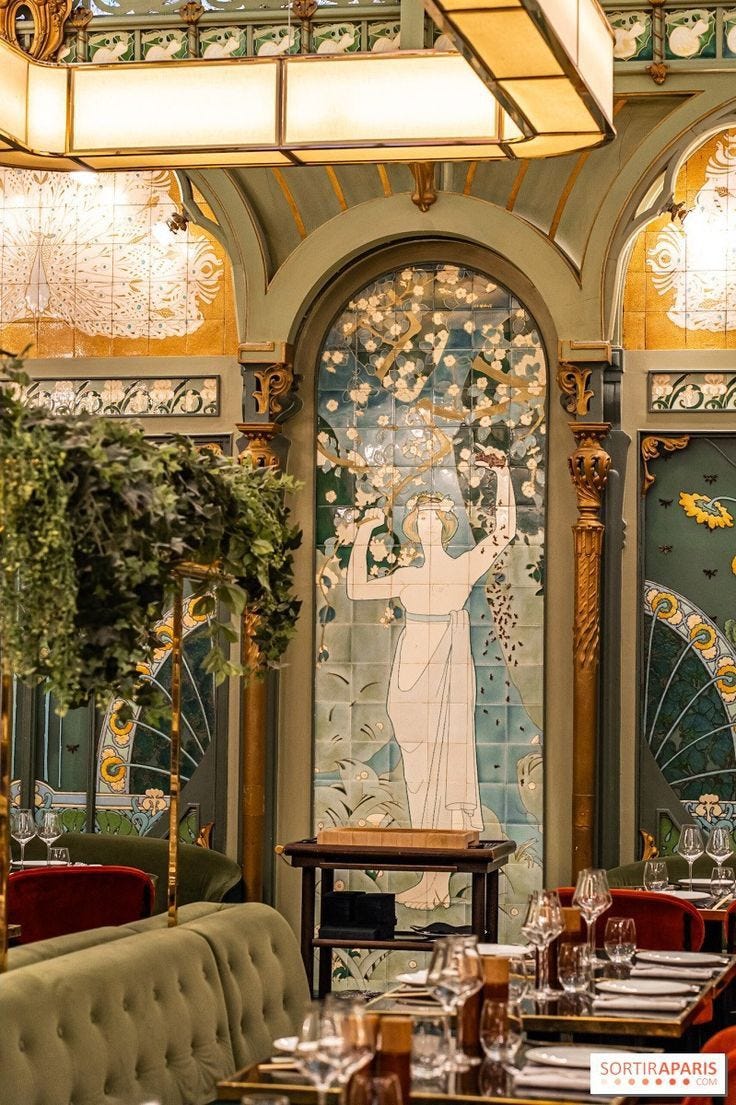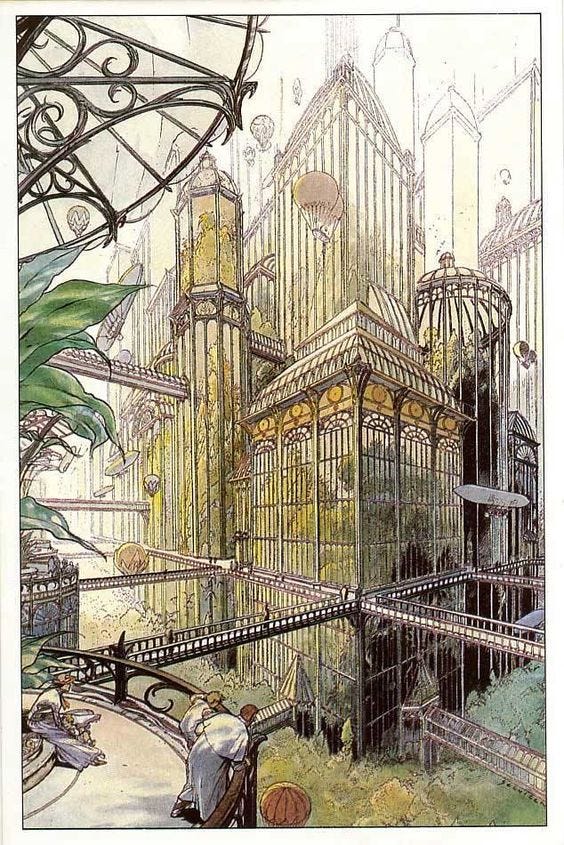"Steampunk is going to crush"
You always knew, but here's why.
I’ve been On the Road for about 144 hours. Remembering the keys, forgetting the clues. Consuming less, creating more. Places change and so do people. Steer the ship, pull the levers, clash the buttons. There really are no rules, except for the only one that matters: Etiquette > Rules. Neutralize doubt through action, but play it cool; this is the ultimate etiquette. Anyways, here’s a draft about some chill design stuff that I used as a warm-up to get my mind right.
To get us on the same page:
Art Nouveau sits at the turn of the 20th century and marks a key node in the lineage of design that emphasizes flowing, organic, and nature-inspired forms. It values intricate details, curves, and motifs that mimic plants, vines, and whiplash lines. To understand how other styles relate, here’s a look at a few other relevant movements and where they fit in this tree:
Arts and Crafts Movement – Preceding Art Nouveau, Arts and Crafts (mid-19th century) emphasized craftsmanship and anti-industrial ideals, which influenced Art Nouveau’s dedication to handmade detail and organic forms.
Art Deco – Art Deco (1920s–1930s) was a response to Art Nouveau’s naturalism, favoring bold geometric shapes, streamlined forms, and a more “machine-age” aesthetic. Deco simplified what Art Nouveau made intricate, setting the tone for modernism.
Jugendstil – A German variant of Art Nouveau, Jugendstil focuses on clean lines and stylized, often geometric nature motifs. Like Art Nouveau, it values organic forms but with less embellishment.
Vienna Secession – A parallel to Art Nouveau in Austria, Vienna Secession merges organic motifs with a more abstracted, symbolic approach, blending natural themes with philosophical undertones.
Steampunk – More a retro-futuristic aesthetic than a historical art movement, Steampunk borrows from Victorian and Edwardian design elements but mixes them with science fiction, machinery, and a dystopian or utopian feel. While it doesn’t descend directly from Art Nouveau, it draws on the same fascination with craftsmanship, invention, and ornate detail. Steampunk’s mix of metal gears, brass fixtures, and intricate design recalls some Art Nouveau traits but with an industrial twist.
In the "design family tree," Steampunk branches off more as a speculative, neo-Victorian genre, nodding to both the Victorian-era precursors to Art Nouveau and the spirit of creative innovation that Art Nouveau embodies.
Art Nouveau—the sultry siren of the turn of the 20th century—sits at the heart of the design jungle, a lush node where flowing lines and nature-inspired forms intertwine like vines in a forgotten garden. This movement didn’t just tiptoe around intricate details and whiplash curves; it dove headfirst into the botanical madness, mimicking plants, vines, and every curve Mother Nature threw its way. Think of it as the original organic influencer, before Instagram made it cool.
But let’s not get too cozy with Art Nouveau without peeking at its rebellious cousin, Steampunk. Picture this: a speculative, neo-Victorian genre that splinters off the Art Nouveau family tree like a rogue commander. Steampunk isn’t just about gears and goggles; it’s a middle finger to the sterile precision of modern design, a nod to the Victorian-era visionaries who dared to dream beyond the steam-powered machines of their time. It channels the same creative innovation that Art Nouveau champions but twists it into something gritty, mechanical, and unapologetically avant-garde. (The World is craving it.)
Here’s the Shtee: while Art Nouveau whispers sweet nothings about flowing lines and floral motifs, Steampunk shouts with the clang of metal and the hiss of steam. It’s the design equivalent of a poetic rebellion—where elegance meets machinery, and beauty isn’t just seen; it’s felt in every cog and every crafted detail. These two movements, though seemingly worlds apart, are bound by their refusal to conform, their relentless pursuit of a design language that speaks to both the soul and the machine.
So, as we wander through this tangled forest of design history, let’s raise a glass to Art Nouveau’s botanical elegance and Steampunk’s industrial defiance. Together, they remind us that true creativity isn’t about following trends—it’s about forging new paths where art and innovation collide in a spectacular dance of form and function. Welcome to the elegant vines and greased gears of the design jungle, where every curve tells a story and every gear turns towards the future.
End Transmission



